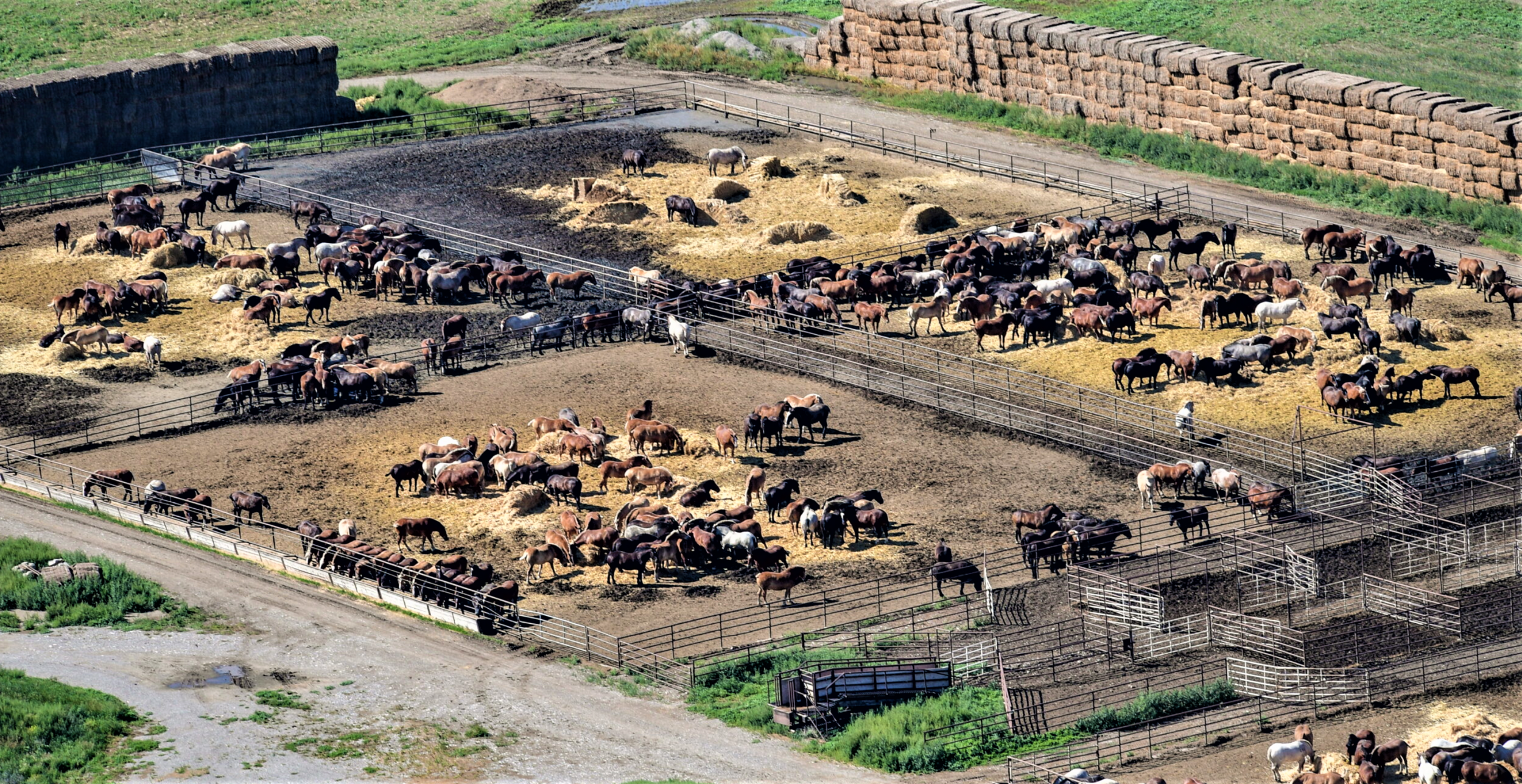By Jessica Scott-Reid
Jessica is a Canadian writer, animal advocate and plant-based food expert. Her work appears regularly in media across Canada and the US.
Canada’s horse meat industry has received growing media attention over the last year. Many animal lovers the world over have been shocked to learn that thousands of live horses, crammed into crates and packed onto cargo planes, are exported on grueling long-haul flights from Canada to Japan every year, to be slaughtered for sashimi. Activists on the ground have gathered evidence of horses being loaded up at airports in Manitoba and Alberta, and have taken the federal government to court over serious animal welfare violations.
However, there is another concerning aspect of Canada’s horse meat industry that advocates, including the Canadian Horse Defence Coalition (CHDC) and Humane Society International/Canada (HIS/Canada), say has yet to receive appropriate attention. It is the environmental impact of farming animals that are not even consumed by the vast majority of the country’s population, and the shipment of live horses on massive planes across the globe. Perhaps most concerning of all though, is a serious lack of transparency and information on the topic.
Horse meat is a multi-million-dollar industry in Canada. The country is a world leader in not only exporting live horses for food, but also importing, farming and slaughtering horses for meat onsite, which is then primarily exported to other countries. Those horses, whether imported from the US, bought at auctions in Canada, or bred on the farm, typically spend time on massive feedlots before being slaughtered or flown overseas. And it is these feedlots, particularly their impact on the surrounding environment, that advocates have been asking unanswered questions about for a number of years.
Photo credit: Canadian Horse Defence Coalition
Over a decade ago, HIS/Canada, along with some municipalities in Alberta and Quebec, attempted to find out how local horse meat farms were impacting land and water in the surrounding areas, says HIS/Canada senior campaign manager Ewe Demianowicz. The issue of concern was and continues to be how waste produced by the animals, as well as how parts of the horses leftover after butchering and rendering, and bodies of horses who die before slaughter, are disposed of, and how this could potentially contaminate land and waterways.
The group was able to gain evidence of “water samples not meeting [environmental] standards,” says Demianowicz. But, she adds, when attempts were made to look into the issue further, submitting access to information requests, seeking information regarding certain certifications of slaughter facilities, the group was met with “resistance in providing the information.” She says in trying to run more tests on the samples, “the owners of these facilities were requested multiple times to provide information, to participate in the process, and we see there is really a resistance in providing that information.”
Drugs given to horses, such as phenylbutazone, naproxen and flunixin have been found in environmental samples in and around racetracks, excreted through waste. These pharmaceuticals can be toxic to the environment, interfering with certain land and aquatic organisms and potentially altering ecological balance. Horses farmed and slaughtered for meat in Canada can include former racehorses and pets, and as Sinikka Crosland, executive director of CHDC states, “there are lots of concerns about the drug traceability issue.”
Though phenylbutazone, or “bute” is banned in animals slaughtered for food in Canada, Crosland calls it “a medicine cabinet essential for most horse owners.” Thus, she explains, “when horses from random directions are bought by kill-buyers at auction and are presented for slaughter, chances are high that many will have been treated with bute at some point in their lives.”
In 2015, Canada's largest horse meat producer hired a consultant to perform soil sampling in order to be able to release wastewater onto surrounding lands if soil conditions met certain parameters. The results did not meet the necessary parameters, however the consultant fraudulently reported they did. She was not sentenced for the violation until 2018, and it is unclear how much wastewater was dumped on the land before the fraud was detected.
But bodily waste is not the only source of possible environmental contamination. Horses have approximately twice as much blood as cattle. After slaughter, where does it all go? In 2008, an investigation by CHDC at the now shuttered Natural Valley Farms in Saskatchewan, found raw horse blood was being illegally dumped by tanker truckloads onto grain fields that lead directly into the Qu’Appelle River.
Today, where horse waste, blood and body parts end up after the industry has removed all that is of value to them, appears to be a mystery. Though looking at other animal farming sectors, municipal landfills are a likely answer.
Beyond worries about the eco-impact of Canadian horse meat farms and slaughter facilities, advocates also point to hazards associated with using cargo planes to fly horses across the globe. “To be sending animals to the other end of the world to be slaughtered just for a luxurious, unnecessary item to be served to wealthy clients” says Demianowicz, “in this time when we are trying to fight climate change, to find solutions, this seems like a really absurd way of consuming these animals.” Consider that in 2018 there were at least 28 flights from Canada to Japan, 39 in 2019, and 19 (fewer due to the pandemic) in 2020, all involving up to 100 horses per flight, the carbon footprint for a plate of horse sashimi is unarguably off the charts.
Producing a food mainly destined for foreign consumers helps the Canadian horse meat industry to operate very much under the radar. But thanks to advocates, activists, and some Canadian star power, the industry is gaining more attention for obvious animal welfare violations. Now we can add environmental concerns — and a lack of transparency around that — to the list of reasons why Canada, like the US, should end its horse meat trade.



